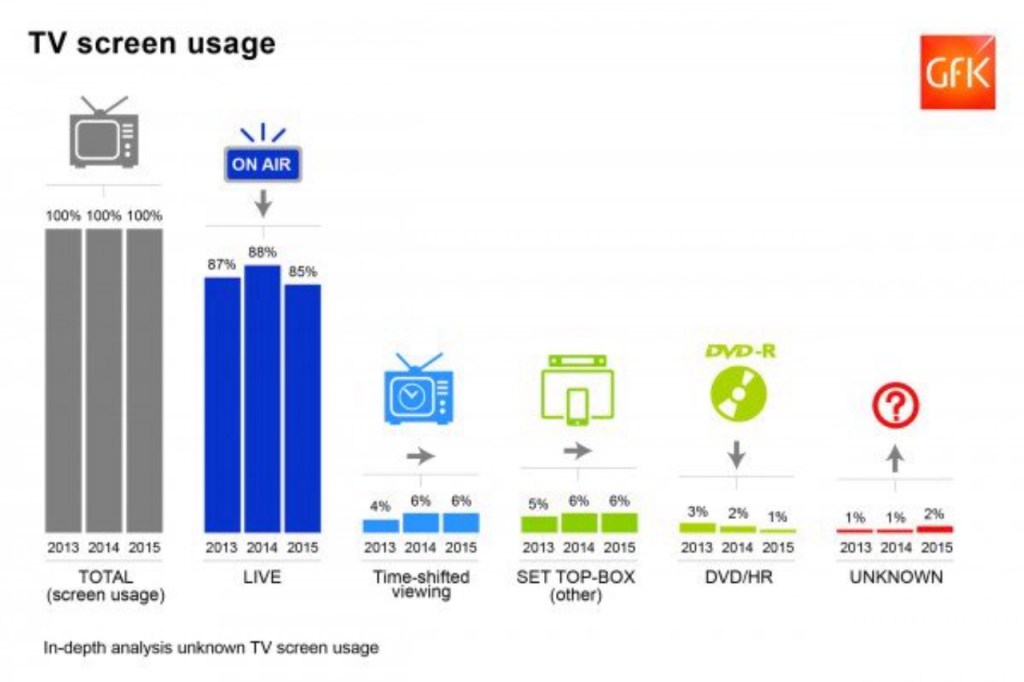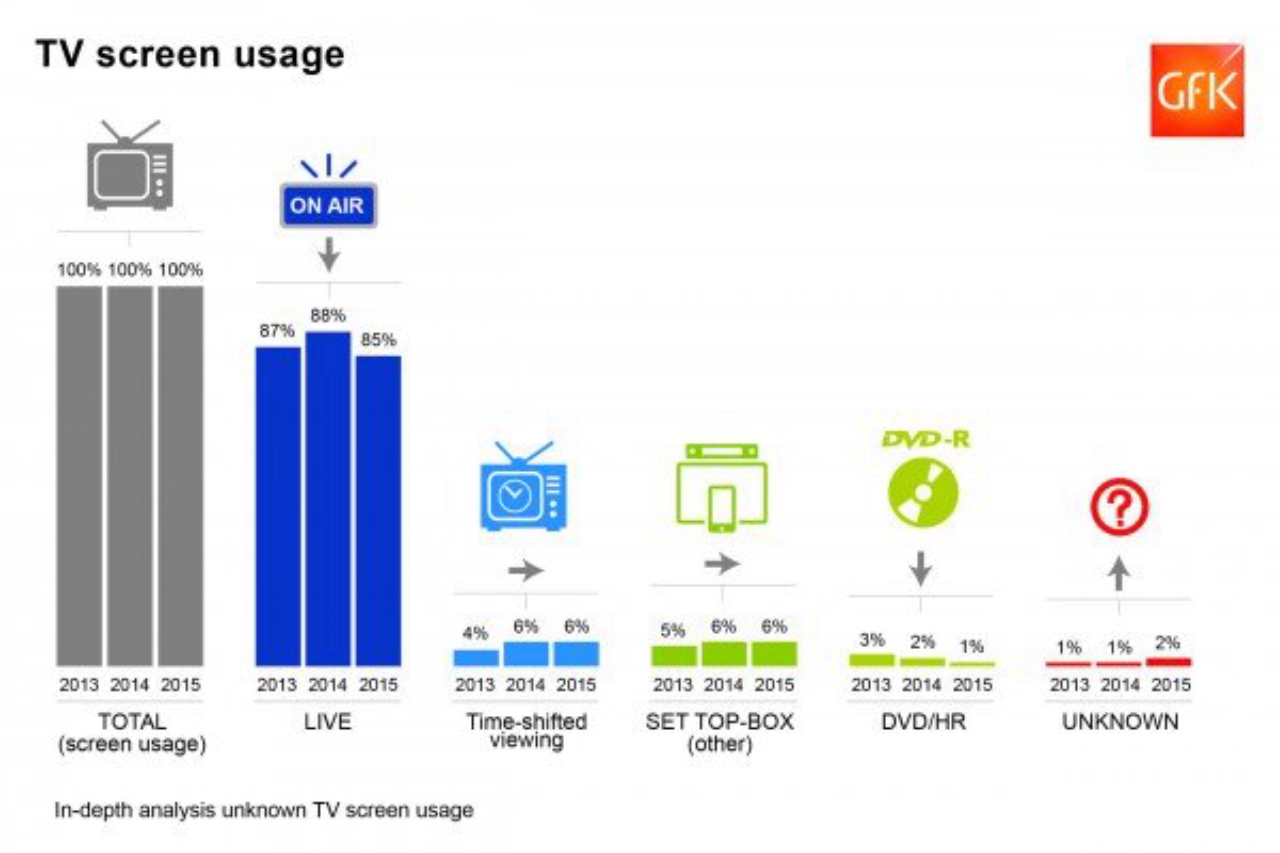In 2015, GfK celebrated 50 years of Television Audience Measurement (TAM) in The Netherlands. Time to reflect how emphatically the media landscape and the TAM challenges have changed, all around the globe: Digitization has been driving the proliferation of different devices and ways of viewing TV content. “Connected” consumers shift from live TV to time-shifted and video-on-demand (VOD) viewing – sometimes simultaneously on more than one internet-ready screen. How and in what time do these trends impact TV consumption? How will we capture latest audience behavior in new dimensions to provide broadcasters and advertisers with the insight they need today and tomorrow? How can we “future-proof” TAM in an increasingly complex and challenging environment?
These are definitely exciting times for those working in TAM. As the media ecosystem continues to evolve, we must continue to innovate and develop quality assured ways of measuring it. There are currently two aspects drawing researchers’ attention:
1. The type of viewing is changing: Live to time-shift and VOD
While the total amount of time spent per day watching TV has changed little over the past three years (2013-2015), the type of viewing is changing. Live TV still accounts for the majority of TV viewing, but it has declined, while time-shifted and viewing of VOD content have increased. So, traditional TAM risks missing a substantial part of the “unknown” viewing, consisting of VOD content and subscriptions to VOD services that are on the increase, also in The Netherlands. (Source: SKO/GfK Research)
2. There is a next generation of devices in proliferation: Smart and addressable TVs
State-of-the-art measurement strategies, like those of Dutch television audience measurement servicer SKO, already encompass the “big” TV screen and mobile devices. But there is more to come. Sales of smart TVs continue to increase and new technological advancements, such as addressable TVs, are emerging on the horizon. As connectivity increases, we expect more relevant impact on viewing behavior. Luckily, there is still a gap between smart TV penetration and the number of TVs being connected to the internet. That gives TAM innovators time to prepare.
Three things TAM providers and TAM savvy businesses will have to do
With more time-shift and VOD viewing and more smart TVs in the market – of which only a smaller part have so far been running connected to the internet: How will we learn if, when and how these trends will continue to alter perception of TV content?
Leaders focus on three strategies to master the challenge:
- Improving quality of metering: Fundamental is a technical upgrade of the metering system to improve online data communication, resulting in faster and more efficient data processing. In addition, extending the memory of the meter will pave the way for more granular level measurement of targeted advertising and the provision of data much closer to the viewing occasion. Furthermore, it is useful to increase panel sizes to improve representativeness, strategies that players like SKO and GfK have jointly been exerting in the Netherlands.
- Extending metering to new viewing trends: To gain insight into developments and a better understanding of the VOD trend, SKO and GfK have added VOD to their measurement system. Within the Dutch market it is now easier to map, for example, the penetration and usage of devices and video-on-demand (VOD). GfK has set up a continuously expanding VOD library with relevant content to pinpoint which VOD has been watched in households.
- Understanding what is being viewed on smart TVs: GfK uses several ways to dig into what is being viewed on smart TVs. For example, specific routers are devoted to measure TV viewing on all connected devices. There are technical opportunities to derive information from HDMI ports, which are used to connect peripheral devices such as media players. Additionally, surveying your TAM panel during the registration process about their devices and extending the regular panel surveys will provide valuable details.
Future-proofing television audience measurement is an innovation-seeking challenge that will need digitally savvy trailblazers. The benefits of this for both broadcasters and advertisers in terms of the targeting and optimization of content are clear: Measurement methods are advancing for targeted advertising, requiring more granular and faster reporting. Also, TAM insights won’t solely focus on broadcast content but also VOD.
Please email me to share your thoughts at Liesbeth.Nekkers@GfK.com. And find out more about Audience Measurement and Insights.
About
“Future-proofing TV audience measurement for the “connected” consumers” was the subject of a presentation GfK gave with SKO, television audience measurement servicer and GfK client in The Netherlands, at the ASI European Television Conference in Venice in November 2015. More information: https://www.asiconferences.com/






